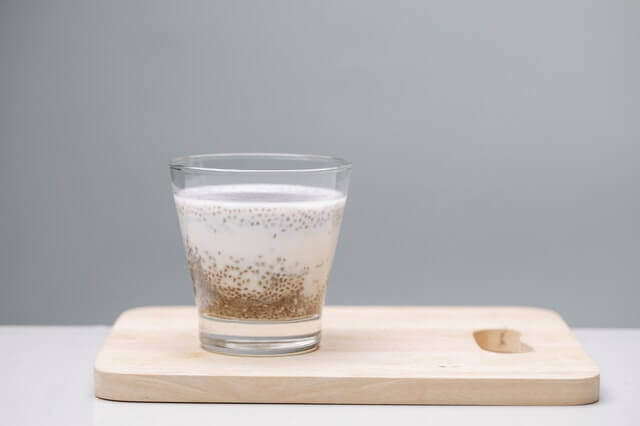Eating a diet higher in omega-3 fatty acids could reduce the frequency and intensity of migraine headaches, according to an interesting study published in the prominent British Medical Journal last week.
The study, which recruited more than 180 adults with frequent migraines (about 5 to 20 per month), randomly assigned participants into one of three diet plans to evaluate the effects of omega-3 and omega-6 fatty acids in migraine inception and progression.
The skinny on healthy fats
Omega-3 and omega-6 fatty acids, sometimes known as n-3 and n-6, respectively, are unsaturated fats critical to several essential functions of the body. Both types of fatty acids, which are made up of a specific number of carbon and hydrogen atoms linked together, are precursors of oxylipin, a family of substances closely involved in pain regulation and inflammation.
Omega-3, the most acclaimed of fatty acids, is known for its cardiovascular and neuroprotective effects, as well as its ability to fight inflammation. High levels of omega-6 fatty acids, on the other hand, can contribute to excess inflammation, raise your blood pressure, and lead to potentially fatal blood clots.
There are many types of omega-3 and 6 fatty acids, which differ based on their chemical composition and size. However, they are all considered “essential” fats because the human body cannot produce them, meaning that you need to obtain them from food or dietary supplements to maintain adequate levels. Omega-3 is found in animal and plant-based foods such as fish, nuts, and flaxseed, and foods high in omega-6 include vegetable oils, processed foods, and meat.
The migraine-omega link
Previous studies already theorized that a higher intake of omega-3 fatty acids could be associated with a reduction in the frequency and duration of migraine headaches. Human and animal clinical trials have shown that omega-3 acids have properties that may inhibit the production of inflammatory substances long associated with pain syndromes such as migraines. But specific studies on omega-3 supplementation to manage and prevent migraines have been mostly inconclusive.
Conversely, the new study’s findings, which was conducted by the National Institute of Aging (NIA) with funding from the National Institutes of Health (NIH), paint a clearer story. Over a 16-week period, all participants — regardless of the diet plan they were assigned to — received meal kits containing fish, hummus, vegetables, and breakfast items.
Beyond the standardized meals, one group received higher levels of omega-3 and lower levels of linoleic acid (omega-6). The second received higher levels of both omega-3 and omega-6, and a third group (control) received low levels of omega-3 and high levels of omega-6, which, according to the researchers, mimics the standard American consumption of fatty acids.
The participants were also asked to track the frequency and duration of their headaches in addition to everyday factors, including their ability to function socially, at school, or work, as well as their medication intake and number of migraines per month.
At the end of the study, both omega-3-rich diets led to important decreases in migraine frequency and duration, compared with the control diet. But it was the high omega-3 plus low omega-6 diet that offered the most remarkable improvements, yielding a significant reduction in total migraine hours per day as well as shorter and less severe headaches, compared to the control group.
What this means for you
There’s still a lot we don’t know about migraines and why some people seem to be more susceptible to these excruciating headaches than others. However, studies like this add to the existing body of literature and provide helpful information on drug-free interventions that could potentially improve the lives of millions of women, men, and children who suffer from this debilitating neurological disease.

What’s the link between omega-3s and migraine?
Experts recommend that adults consume a minimum of 250 to 500 mg of omega-3 per day (currently there’s no upper limit of omega-3 intake, though most experts draw the line at 5 grams per day). It’s also important to note that the standard American diet contains nearly 10 times more omega-6 than omega-3, which could hinder the positive effects of healthy fatty acids. Research suggests that the optimal omega 3 to 6 ratio should be closer to 2:1.
How to Get More Omega-3s in your Diet
The best way to get more omega-3 into your diet is from healthy foods like fish and nuts, though omega-3 supplements are generally considered safe and produce little to no side effects in healthy individuals at the appropriate dose. If you don’t know where to start, consider adding these omega-3-rich foods to your daily meals:

Chia seeds
- Chia seeds (5,060 mg per tablespoon)
- Walnuts (2,570 mg per serving)
- Flax seeds (2,350 mg per tablespoon)
- Salmon (4,123 mg per serving)
- Sardines (2,205 mg per serving)
- Anchovies (594 mg per serving)
- Mackerel (2,753 mg per serving)
Foods high in omega-6 that you should consider cutting down or avoiding altogether include:
- Fast foods and processed foods
- Processed chips
- Vegetable oils (corn, safflower, cottonseed, soybean)
- French fries
- Store-bought baked goods

Just say no to processed potato chips


